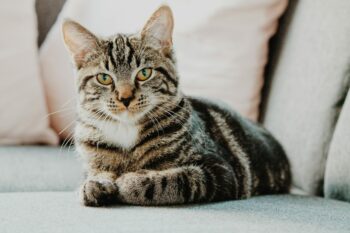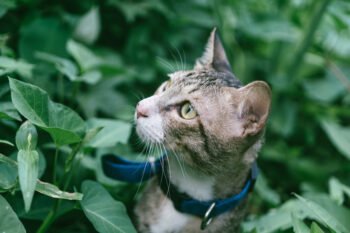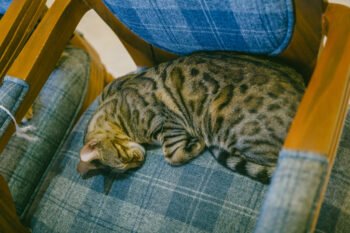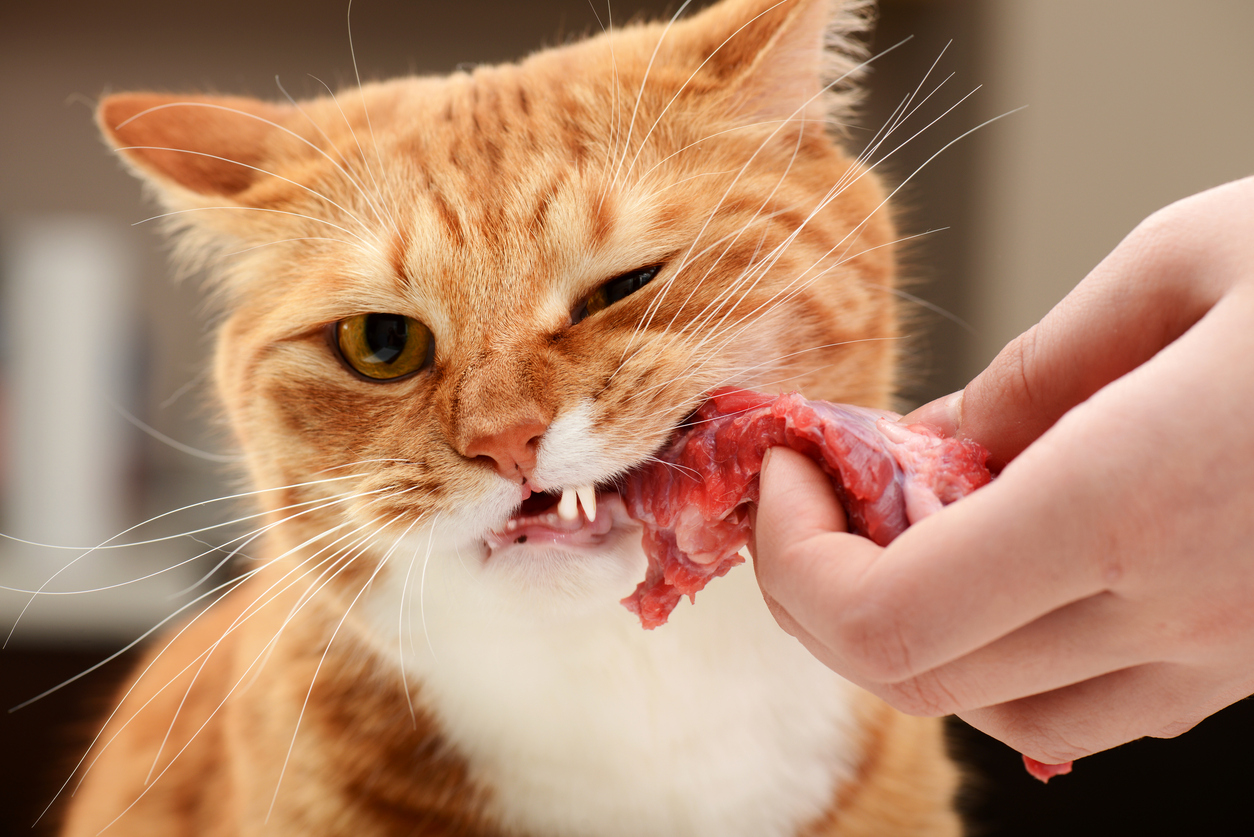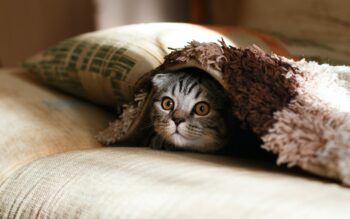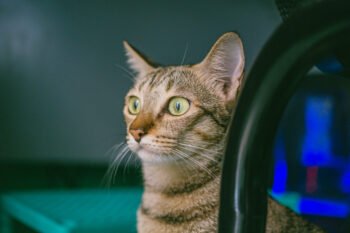Cats can be notoriously picky, snubbing food left and right. A big — and often messy — clue that something is wrong may be in or around your cat’s litter box. If your cat’s bathroom habits are amiss, it could be suffering from dietary intolerance (aka a sensitive tummy). Once you’ve detected the signs, our experts suggest the following:
1. Rule out serious health issues.
As an associate emergency veterinarian in Alexandria, Va., Dr. Katy Nelson sees a lot of cats with litter box issues and related problems. “A cat with chronic vomiting and diarrhea should be examined carefully by a veterinarian to rule out metabolic (renal, thyroid, etc.), infectious (parasites, viral, bacterial imbalance, etc.), inflammatory (inflammatory bowel disease, lymphoma, etc.) versus other types of issues,” says Nelson. If any of those are diagnosed, appropriate treatment will follow.
Nelson, however, adds that something else might be to blame: “After a thorough work-up, if it is determined that the cat has dietary intolerance, pursuing a food that is highly digestible is recommended.”
2. Consider feeding your cat a low-residue cat food.
Your veterinarian might steer you to a low-residue food, which works by providing a special blend of fiber, protein and fat sources. “The protein and carb sources in these foods should be low-antigen,” says Nelson. Antigens are ingredients that can cause allergic reactions in some cats. Soy is sometimes a culprit, but food allergies differ between cats.
“The fiber sources should be moderately fermentable, as these produce lower amounts of gas than their more fermentable counterparts,” adds Nelson. Dried beet pulp is one such beneficial fiber.
Sensitive-stomach foods should also contain prebiotics to tailor the bacterial load in the GI tract. Dr. Amy Dicke, a technical services veterinarian for Iams, explains that “a prebiotic, such as fructooligosaccharides (FOS), is a fiber, which is not digested by the enzymes in the dog’s or cat’s digestive tract. Instead, the bacteria in the intestinal tract break the fiber down and use it for food.” Continues Dicke: “What makes a prebiotic different from other fibers is it feeds (or supports) the good bacteria (not the bad), helping the good bacteria to grow.”
3. Pay attention to your cat’s entire digestive system.
Many people tend to think of the digestion system as just being in the gut, but the process really begins right where the food goes in. According to an Emerson Animal Hospital fact sheet, “The feline digestive system — like our own — consists of several organs, including the mouth, esophagus (food pipe), stomach, duodenum, small and large intestines, and rectum.” The Waco, Texas, hospital helps with that process from the start by providing oral care to cat patients.
Dr. Joann Young, a veterinarian in Dover, N.H., is also adept at caring for kitty teeth. “Almost three out of four cats have tooth and gum disease by age 3, according to the American Veterinary Dental Society,” says Young. It is the No. 1 diagnosed problem in small-animal clinics today.”
Tooth decay, bad breath, bleeding gums and even tooth loss are all symptoms of dental disease. “Problems begin when food particles and bacteria build up in the cat’s mouth, forming plaque and tartar, causing gingivitis and severe periodontal disease,” says Young. “These bacteria can enter the pet’s bloodstream and damage the heart, liver, kidneys and lungs, according to research.” Brushing your cat’s teeth regularly and scheduling regular cleanings (especially if your cat will not tolerate home tooth-brushings) is therefore essential to your pet’s overall health.
4. Find a good diet for your cat and stick to it.
Nelson offers these final words of advice: “To avoid GI upset in kitties with sensitive stomachs, do not switch diets around, do not change protein and carb sources, and avoid giving fatty treats.”
Photo: @iStockphoto.com/artist-unlimited

